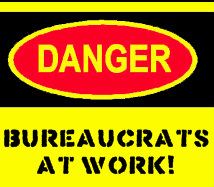CA massage law: A case study in regulatory failure

 Residents of Los Angeles know that “medical” marijuana shops are not the only gray-market business that’s experienced a recent boom. In a city with a taste for pleasure and an enterprising working class, “massage” parlors are apt to have a significant presence — and L.A. is no exception.
Residents of Los Angeles know that “medical” marijuana shops are not the only gray-market business that’s experienced a recent boom. In a city with a taste for pleasure and an enterprising working class, “massage” parlors are apt to have a significant presence — and L.A. is no exception.
To an even greater degree than pot shops, massage parlors offer policymakers a challenge: how to let legitimate legal businesses flourish, without also turning a blind eye to the unlicensed and unregulated sale of sexual encounters. Statewide, the issue is receiving renewed attention, thanks to the expiration this year of a 2008 law intended to solve the puzzle.
As Californians consider how to move forward, they’re coming to realize just how inadequate and ineffective the expired rules quickly became. Even more important, however, is that they — and all Americans — grasp why the ’08 law failed. Though massage law may not strike most people as a perfect example of the perils of bad governance, California’s return to the regulatory drawing board reveals that it is.
As The Sacramento Bee reports, the League of California Cities is pushing Sacramento lawmakers to return to an approach the 2008 law rejected — one in which local regulators had the authority to apply their own varying ordinances to the massage parlor business. Frustrated municipalities “say the 2008 law has left them ill-equipped to handle” the spread of massage parlors that’s growing across the state.
Failure of universal standards was predictable
 How did the soon-to-expire law fail so badly to meet expectations? The answer closely fits a pattern that critics of bad legislation have long argued against. Especially in California, policymakers’ conventional wisdom adopts the same posture to any regulatory opportunity: first, sweep in with new, universal standards; second, create a new official body given full control over their enforcement and administration. Then, the logic goes, policymakers can sit back and watch the new regime efficiently work its magic.
How did the soon-to-expire law fail so badly to meet expectations? The answer closely fits a pattern that critics of bad legislation have long argued against. Especially in California, policymakers’ conventional wisdom adopts the same posture to any regulatory opportunity: first, sweep in with new, universal standards; second, create a new official body given full control over their enforcement and administration. Then, the logic goes, policymakers can sit back and watch the new regime efficiently work its magic.
With the massage industry, as any other, the result of this kind of policymaking is decidedly less than magical. To be sure, it works like a charm — just not in the virtuous way legislators had hoped.
Policymaking at the national level shows time and again how big business interests in any industry lobby hard to secure and protect centralized regulatory standards, which are easier to navigate, “capture,” and, in some circumstances, work around. As is now par for the legislative course, California’s massage industry came out strongly in favor of universal rules controlled by a single government entity. Sure enough, under the 2008 law, local ordinances were replaced by a “state nonprofit” called the California Massage Therapy Council, which oversaw workers’ education, screening and certification.
But instead of ushering in a new era of clear, strong and judicious enforcement, the rules laid down by the 2008 law favored the massage industry. On the one hand, standardized permitting helps prevent rogue masseurs or masseuses from skipping from one town to the next. On the other, since the permitting system applies to individual workers, parlor proprietors who violate the law can repeatedly avoid punishment.
Massage parlors not like other businesses
The current law’s taste for uniformity, meanwhile, has stuck localities with a mandate to treat massage parlors the same way as any other businesses, despite the fact that so few other businesses are breeding grounds for illegal sexual commerce. That helps violators continue the very kinds of practices that centrally enforced standards were supposed to do away with.
That’s why California cities like San Gabriel are already getting started on new municipal regulations that would replace the misbegotten statewide regime.
Of course, if cities and counties manage to wrest regulatory control back from Sacramento, controversy is inevitable. There will always be some activists for whom a city may come down too hard or too soft on massage parlors. For a few, the ultimate solution to the challenge is to legalize prostitution.
In the meanwhile, however, California’s circuitous path back to diversity in local regulation has plenty to teach Americans about the limitations of standardized, top-down regulations. From Oregon to Ohio, massage law is making headlines. In an era when the Internet is creating a new realm of possibility for consensual sexual transactions, the use and abuse of massage parlors is a case study in the false promise of laws forged by big industries and big-government regulators.
Related Articles
Lawmakers work with industry to improve ride-sharing
State lawmakers have shelved a plan to adopt new regulations on the state’s burgeoning ride-sharing industry in favor of industry-backed
CA social engineers: Gov’t should parent ‘disadvantaged’ kids
April 18, 2013 By Chris Reed The recent flap over an MSNBC promo in which commentator Melissa Harris-Perry declared that
The high cost of ignoring the truth: Sacramento Convention Center
The City of Sacramento, usually on the wrong side of economic sense and accountability, is planning to build an even



